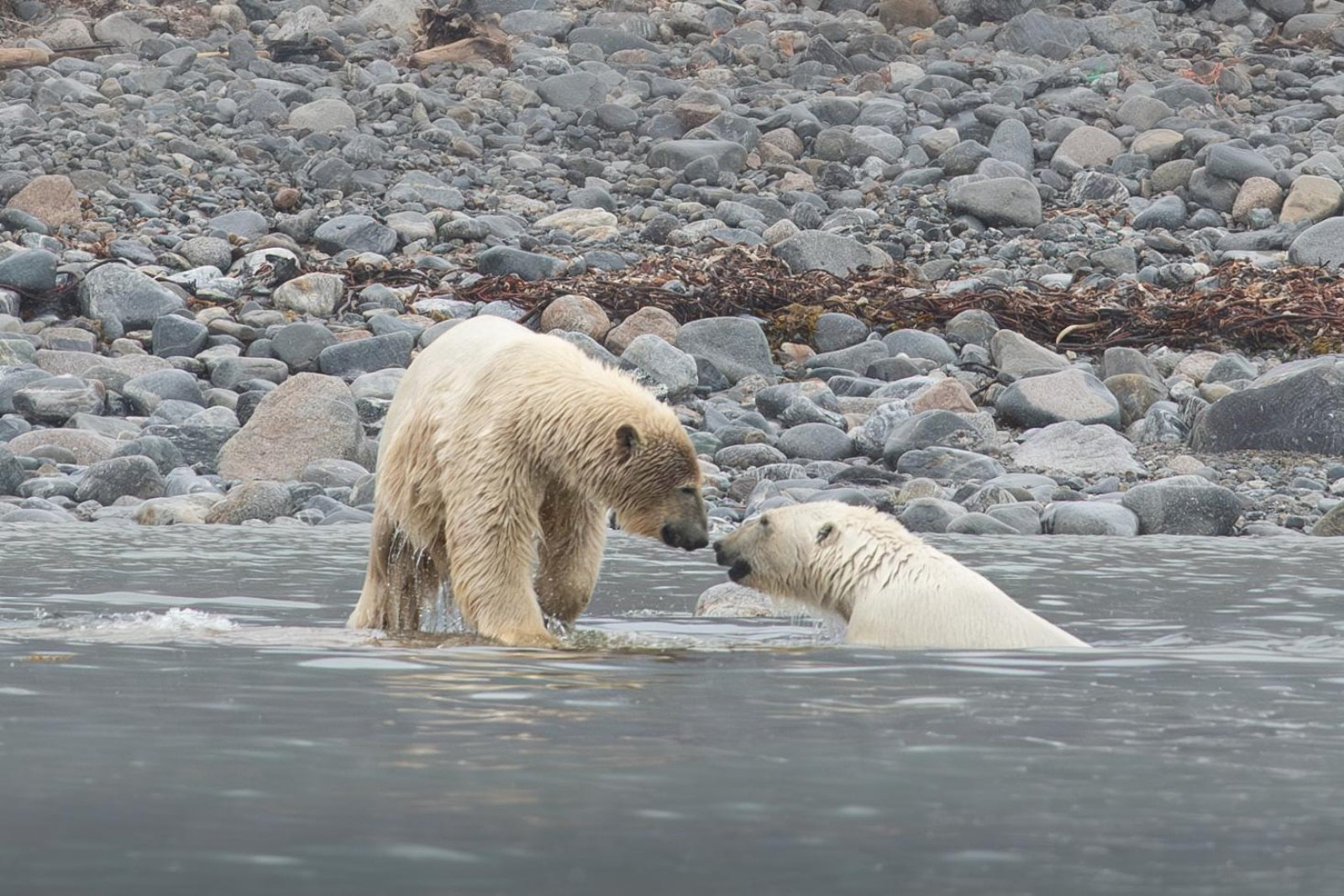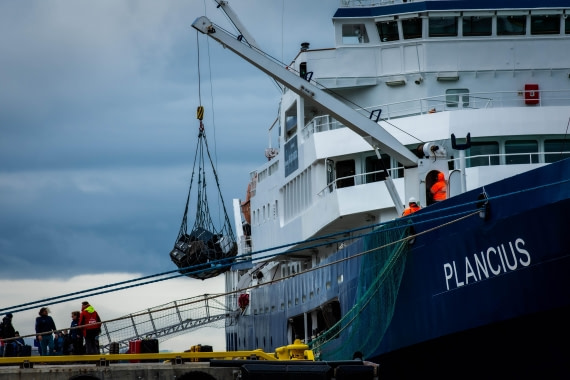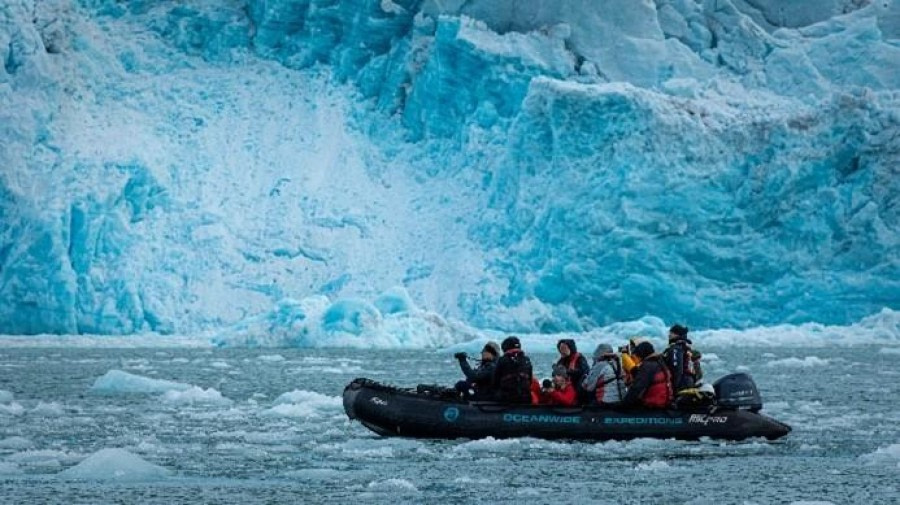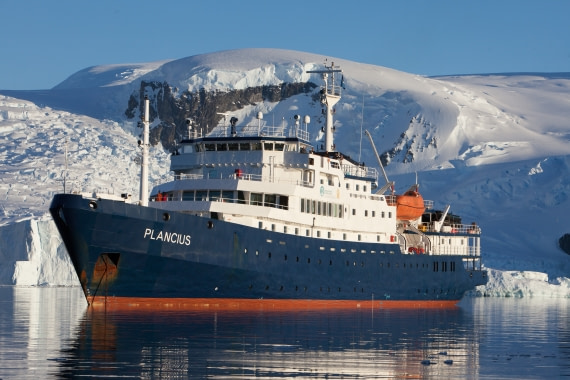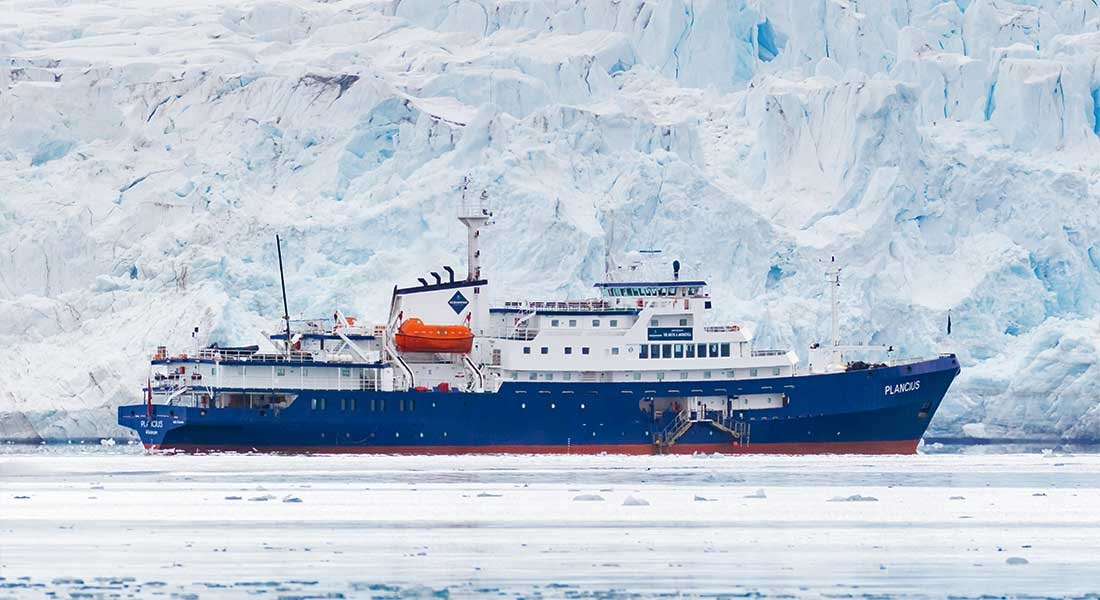| Datum: |
28.06.2024 |
| Position: |
79°45.3'N / 010°57.1'E |
| Wind: |
W4 |
| Wetter: |
Bedeckt |
| Lufttemperatur: |
+3 |
Für viele war es eine unruhige Nacht, denn die Plancius bewegte sich im Seegang vor der Westküste von Prinz Karls Vorland. Wir fuhren die ganze Nacht hindurch in Richtung Norden, mit dem Ziel, unser erstes geplantes Ziel in Raudfjord zu erreichen.
Doch nicht lange nach unserem Walk-up Call meldete sich unser Expeditionsleiter über die Lautsprecheranlage und informierte uns über einen Eisbären auf unserer Backbordseite! Noch nie sind wir nach einem schlechten Schlaf so schnell aus dem Bett gesprungen. Mit dick angezogenen Schichten eilten wir auf die Außendecks, um die charismatische Tierwelt zu sehen, die so viele Besucher in diese kalten, hohen Breiten bringt.
Wir beobachteten den Bären, der lässig schaukelnd am Strand entlanglief. Obwohl die Bewegung langsam zu sein schien, ging sie so schnell voran, dass wir unsere Beschreibung an die neu auftauchenden Gäste auf dem Deck anpassen mussten. Der Regen störte uns nicht, als wir vor dem Frühstück am ersten vollen Tag unserer Expedition den Eisbären mit Freude beobachteten!
Nachdem wir den Bären einige Zeit beobachtet hatten, zogen wir weiter in Richtung Norden. Der Ort, an dem wir unseren Eisbären gesehen hatten, Sørgattet südlich von Danskøya, war noch einige Stunden von unserem geplanten Landeplatz am Morgen entfernt. Daher änderten wir unsere Pläne in echter Expeditionsmanier und machten uns auf den Weg zur Plan-B-Option für den Morgen.
Gerade als das obligatorische Briefing beginnen sollte, wurden nicht nur ein, sondern gleich zwei Bären auf Amsterdamøya gesichtet, einer kleinen Insel, die noch nicht zu unserem geplanten Ziel gehörte. Erneut wurden große Anpassungen vorgenommen. Phillipp gab uns in der Lounge eine kurze obligatorische Einweisung, bevor wir uns in unsere Kleidung stürzten und zur Gangway gingen. Wir stürzten uns in die Zodiacs, begierig darauf, in der tief hängenden Wolke auf das Wasser hinauszufahren und nach den Eisbären zu suchen. Zu diesem Zeitpunkt hatten wir bereits 4 Bären im Visier! (und 2 Papageientaucher)
Zwei der Bären spielten am Ufer, als wir ankamen. Als wir sie beobachteten, konnten wir sehen, dass es sich um ein Muttertier mit einem Jungtier handelte, das wahrscheinlich etwas über 2 Jahre alt war und fast bereit war, seine Mutter zu verlassen. Ihm wurde gerade beigebracht, wie man Seehunde jagt, eine nützliche Fähigkeit, wenn in der nächsten Bucht eine Seehundkolonie ansässig ist.
Ein Muttertier mit einem jüngeren Jungtier tauchte über den niedrig gelegenen Felsen auf und machte uns deutlich, wie schwierig es sein kann, einen Eisbären in einem auf den ersten Blick flachen Gebiet zu entdecken. Die Mutter und ihr Junges näherten sich den beiden, die am Ufer spielten. Ihre Verwundbarkeit war bei einem solchen Jungtier offensichtlich, und das ältere Jungtier kam aus dem Wasser, um seinen Anspruch geltend zu machen. Nach einem kurzen Blickwechsel und einer Kursänderung gingen das ältere Jungtier und die Mutter auf den Kadaver zu, der am Strand lag.
Es war ein unglaubliches, ernsthaftes Verhalten, das wir beobachten konnten. Alle kehrten mit einem strahlenden Lächeln zu Plancius zurück und unterhielten sich über die Aktivitäten, deren Zeuge wir geworden waren, sowie über die anderen bedeutenden Tierarten und die Geschichte dieses Gebiets auf der Ostseite von Amsterdamøya, das Smeerenburg genannt wird.
Nach einem kurzen Zwischenstopp an Bord zur Einweisung und zum Mittagessen war es Zeit, wieder aufzubrechen. Schließlich erreichten wir den für den Vormittag geplanten Landeplatz - nicht, dass wir irgendetwas an unserem verschobenen Vormittag geändert hätten!
Alicehamna ist ein wunderschöner Ort an der Ostseite des Raudfjords. Dieser Fjord hat eine spektakuläre, dramatische Landschaft an der Westküste und leicht zugängliche, hügelige Berge an der Ostseite. Wir sind in der Nähe einer kleinen Hütte aus den späten 1920er Jahren gelandet, die von Stockholm-Sven, wie er vor Ort genannt wird, gebaut wurde. Durch die jüngsten Renovierungsarbeiten ist die Hütte für Besucher wie uns und für diejenigen, die eine Notunterkunft suchen (nicht für uns), in einem guten Zustand geblieben.
Wir teilten uns in Gruppen auf, um unseren Interessen gerecht zu werden, sei es für eine gute Wanderung mit großartiger Aussicht, eine kürzere Wanderung mit interessanten Gesprächen oder einen kurzen Spaziergang mit vielen Informationen und Diskussionen über das, was wir sehen konnten.
Zurück an der Anlegestelle passten wir unsere Schwimmwesten an und fuhren zurück zum Plancius. Vor einem köstlichen Abendessen gab es eine letzte Zusammenfassung, um diesen unschlagbaren ersten Tag in Spitzbergen abzurunden!
